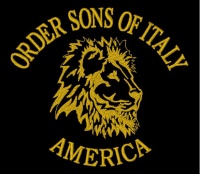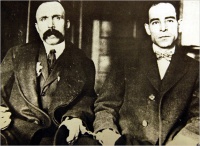From The Peopling of New York City
The Italians were slower than other groups to take part in politics. They tended to migrate and also had anti-government attitudes called ladro governo, “the government as thief”. Their first encounters with politics was supporting Irish Democratic bosses that offered favors in return. [1]
Contents |
The Order Sons of Italy in America
On June 22, 1905, the Order Sons of Italy in America was established in Little Italy by Vincenzo Sellaro and five other Italian immigrants. Their aim was to create a support system for all Italian immigrants that would help them become U.S. citizens and provide health/dental benefits, educational opportunities, and offer assistance with assimilation in America.[2]
Sacco-Vanzetti Case
In 1920, two Italian immigrants Sacco and Bartolomeo Vanzetti, were charged by the state with the murder of a paymaster and a guard and the theft of more than $15,000 from a shoe factory in South Braintree, Massachusetts. The controversy was that they were anarchists and the jury was thought to be biased. There was also inadequate evidence and contradictory evidence used in the trial. The trial evoked protest from socialists, radicals, and prominent intellectuals. The trial reminded a source of conflict for decades.[3]
Growing Political Influence: 1920-1930
By the 1920s and 1930s, Italian immigrants gained U.S. citizenship in large numbers. Many Italian-Americans preferred to move from Manhattan to Bronx, Brooklyn, Queens, and Staten Island where they could purchase a better home. Many immigrants also found higher-paying jobs in skilled labor. As a result of the improving Italian-American status, they also began to win election to public offices. Politicians such as Fiorello La Guardia and New York congressman Vito Marcantonio relied on the support of Italian American workers. Many also joined the Democratic New Deal coalition.
All Nations
Post-World War II
After World War II, Italian Americans had established a better status in America. Many in their second and third generations, there was an increased in education and greater wealth than the early Italian immigrants. Italian Americans were well-represented in the city and state offices and by 1930, four Italian Americans sat in Congress.[4]
References
- ↑ http://www.everyculture.com/multi/Ha-La/Italian-Americans.html
- ↑ http://www.osia.org/public/about/history.asp
- ↑ http://encarta.msn.com/encyclopedia_761555301/Sacco-Vanzetti_Case.html
- ↑ http://www.everyculture.com/multi/Ha-La/Italian-Americans.html

